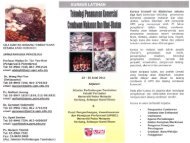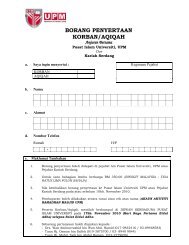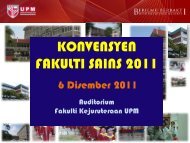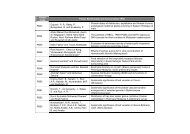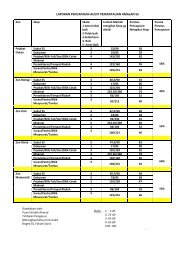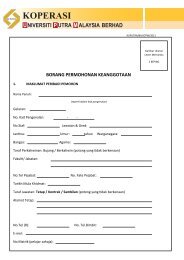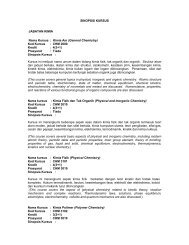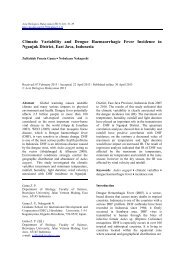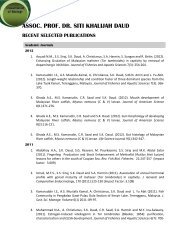Programme Book - UPM - Universiti Putra Malaysia
Programme Book - UPM - Universiti Putra Malaysia
Programme Book - UPM - Universiti Putra Malaysia
You also want an ePaper? Increase the reach of your titles
YUMPU automatically turns print PDFs into web optimized ePapers that Google loves.
P56 COARSE-GRAINED MOLECULAR DYNAMICS OF THESELF-AGGREGATION OF DLPC, DMPC, DPPC, and DSPC INWATERU.V. Gunasakaran, N.S. Shaari, R.A. Karjiban*, M. BasriDepartment of Chemistry, Faculty of Science, <strong>Universiti</strong> <strong>Putra</strong> <strong>Malaysia</strong>, 43400 <strong>UPM</strong>Serdang, Selangor, <strong>Malaysia</strong>Corresponding Author: rosa.abedi@gmail.comPhosphatidylcholines (PC) are common classes of lipids which show an importantrole in membrane-mediated cell signalling and membrane protein function. Lipidmolecules illustrate a rich phase behavior in water including micelles, rod-likestructures, and bilayers. These molecules can function as a surfactant due to theiramphiphilic properties. Coarse-grained molecular dynamics (CG-MD) is a molecularsimulation method that can create a simple model of physical system with less atomicdetails while it preserves the critical features of the molecules under study. Fourphosphatidylcholine (PC) including 1,2-Distearoyl-sn-glycero-3-phosphocholine(DSPC), 1,2-Dipalmitoyl-sn-glycero-3-phosphocholine (DPPC), 1,2-Dimyristoyl-snglycero-3-phosphocholine(DMPC), and 1,2-Dilauroyl-sn-glycero-3-phosphocholine(DLPC) were selected and a mixture of these molecules was preparedas an initial configuration for CG-MD simulation in GROMACS. CG-MD was carriedout for 500 ns at 298 K and the micelle-like behaviour of the aggregated structure wasinvestigated. Our simulation produced a bilayer structure with a thickness of 39.36 Å.The value of thickness for the simulated model mixture was higher than that thethickness of individual DMPC and DSPC molecules. As known, the thickness of lipidbilayer would strongly affect the biophysical properties of transmembrane proteins,especially to understand the lipid role in the modulation of membrane protein activity.71 |16 th Industrial Chemistry Seminar: Chemistry- A Passport to a Brighter Future




